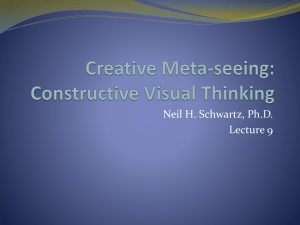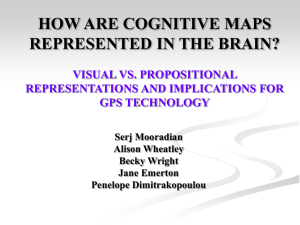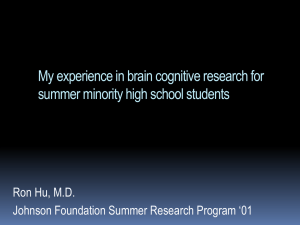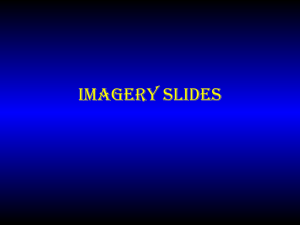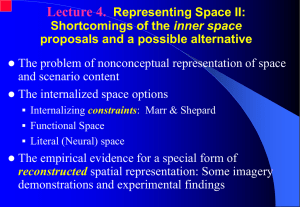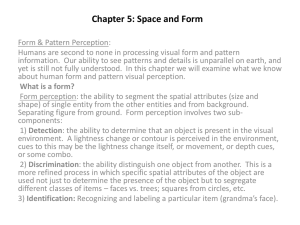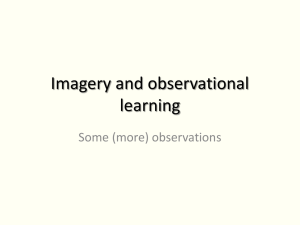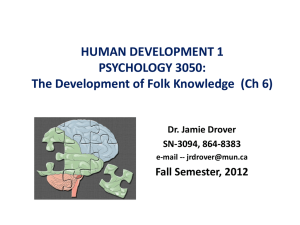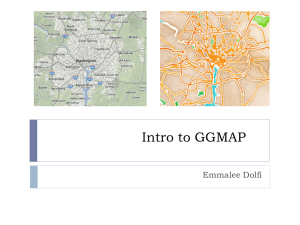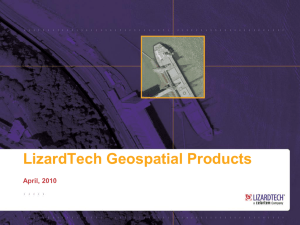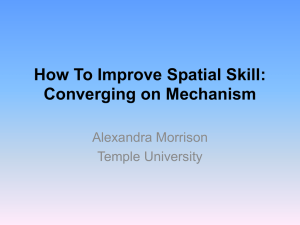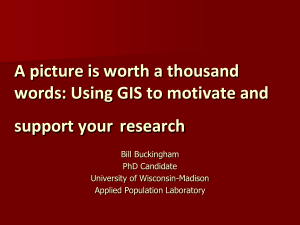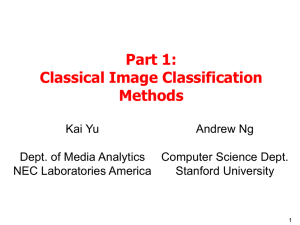Visual-Imagery
advertisement
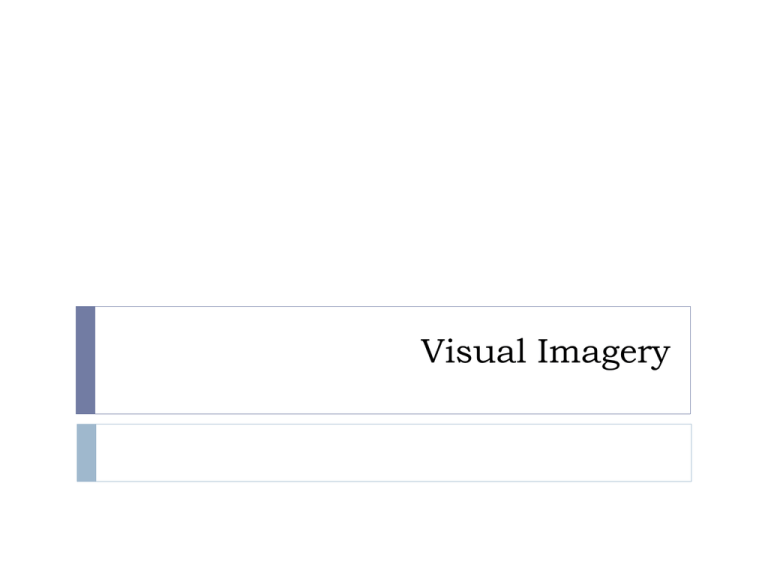
Visual Imagery Imagery Forming a picture in the mind without sensory input Mental imagery Visual imagery Paivio, Smyth and Yuille (1968) Subject studied word-pairs with each member varying in imagery High-High (H-H) High-Low (H-L) Low-High (L-H) Low-Low (L-L) Concrete words were remembered better than abstract words 14 12 Mean No. Recalled 10 8 6 4 2 0 H-H H-L L-H L-L Imagery Dual Coding Theory (Pavio, 1971) Sensory Systems representational connections Logogens (lexical entries) Images referential connections Verbal Processes Non-Verbal Processes Imagery Are visual images different from verbal codes? Kosslyn (1975) Sentence verification task [A 1 has 2 . ] Semantic association between 1 and 2 varied A mouse has a back. A mouse has whisker. Subject told to for mental image of object or not Condition Example No Imagery Imagery Low Association A mouse has a back. 897 ms 1480 ms Strong Association A mouse has whisker. 825 ms 1605 ms +72 ms -125 ms Scanning Mental Images Kosslyn (1973) Mental scanning task Focus on part of a mental image (or real picture) Locate another part of the object Scanning Mental Images Shepard and Metzler (1971) Imagery Debate Do mental images exist? Can we actually scan them, like a real picture? Tacit knowledge explanation Subjects may behave how they think that they should Subjects unconsciously use knowledge of spatial relations Zenon Pylyshyn Are visual images supported by spatial relationships or propositional relationships? Spatial, or depictive, relationships Propositional relationships Imagery Debate Propositional theory (Pylyshyn, 1973) Mental images are stored as propositions between parts “All knowledge, including spatial knowledge and memory for images, can be expressed in semantically-based propositions.” Explains mental scanning results of Kosslyn (1973) REAR DECK (rear of) (behind) CABIN (behind) FRONT DECK (top front of) (side of) (attached to) WINSHIELD PORTHOLE ANCHOR MOTOR (bottom of) PROPELLER (front of) HANDLE *each link-node is a propositional relationship Imagery Debate Spatial (depictive ) Representation Propositional Representation “Sarah Palin is on top of the dinosaur.” Evidence for Spatial Relations in Mental Images To show evidence for spatial relations Performance (RTs) must vary as a function of distance Distances cannot be confounded with propositional links Kosslyn, Ball and Reiser (1978) Subjects encode a map into memory Scan between two points Spatial relationships prediction? Propositional theory prediction? Evidence for Spatial Relations in Mental Images Kosslyn, Ball and Reiser (1978) Scanning time linearly related to the distance between points Evidence favors spatial relations Evidence for Spatial Relations in Mental Images Kosslyn (1975) Does size of mental image influence judgments of features? Imagine animals side-by side and answer questions about one Spatial relationships prediction? Propositional theory prediction? Evidence for Spatial Relations in Mental Images Kosslyn (1975) Results RTs were influenced by size of objects in the ‘mental visual field’ Features more distinct Evidence for Spatial Relations in Mental Images Neural Evidence? LeBihan et al. (1993) Perception and imagery activate visual cortex Increased cerebral blood flow in visual cortex when mentally scanning Evidence for Spatial Relations in Mental Images Galis et al. (2004) Spatial judgments about physical pictures or imagined pictures Measured BOLD signals in an fMRI How Accurate are Mental Images? Relational information is distorted in mental maps Stevens & Coupe (1978) Asked subjects about where one geographical location was with respect to another Example: Is San Diego east or west of Reno, Nevada? How Accurate are Mental Images? Tversky (1981) Subjects drew map of the western hemisphere, with certain cities Miami Santiago
